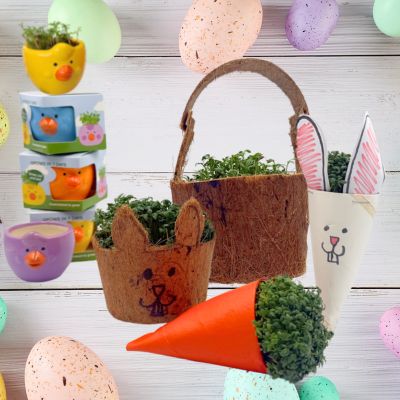Pruning Cucumber Plants
It’s not always necessary to prune cucumber plants; in fact, letting side shoots grow often means a bigger harvest. However, you can trim any side shoots that do not grow flowers, as these won’t produce cucumbers. Pruning them will help the plant focus its energy on growing fruit.
You may also wish to prune trellised cucumbers if you are short on horizontal space. Removing side shoots will encourage vertical growth, making harvesting easier.
Finally, if vine-type cucumber plants grow too many leaves, this can restrict airflow and increase the risk of mildew. Remove older leaves periodically to reduce bushiness and help air circulate.
Removing Male Flowers
Some modern hybrid cucumbers are parthenocarpic: they produce fruit without the need for pollination. These varieties will only grow female flowers, and the fruit is usually seedless. This allows for increased yields and a plant that isn't dependent on pollination. These fruits can be grown in a polytunnel or undercover for a longer harvest period.
However, if the plant is stressed, it may occasionally produce a male flower that has no swelling behind the petals. Remove any male flowers as soon as possible, as pollinated female flowers tend to produce bitter fruits.
Note that this advice does not apply to non-parthenocarpic cucumbers. These must be pollinated (by insects or by hand) in order to produce fruit – so removing the male flowers will mean no cucumbers grow at all.
Pest and Disease Advice
There are a number of pests and diseases that can affect cucumber plants. Here are some of the most common culprits and how to deal with them.
Pests
Some Australian pests that cucumbers are susceptible to include aphids and leaf-eating ladybirds, also called 28 spotted ladybirds.
While leaf-eating ladybirds can be picked off by hand, aphids are too small. If you notice very small green, yellow, brown or black bugs on your cucumbers, you can remove them with a quick spray of the garden hose or some soapy water.
Cucumber plants may also be targeted by slugs and snails, especially when young. You can protect your plants with a physical barrier, such as eggshells, or apply organic slug pellets.
Diseases
Cucumbers are prone to powdery mildew and downy mildew: fungal diseases that produce white, brown or yellow patches on leaves. If left unchecked, they can stunt your cucumbers’ growth or even kill the plant.
These fungi like dampness and humidity, so always water your plants at the roots and trim old leaves to help air circulate. If you notice signs of mildew, remove any affected leaves, and apply a fungicide if the problem persists.
You should also watch out for cucumber mosaic virus, which causes yellowing and mosaic-like patterning on leaves, and prevents flowers and cucumbers from growing. There is no cure for cucumber mosaic virus, so destroy any affected plants immediately to stop it spreading to other plants.
Companion Plants
There are many excellent companion planting seeds for cucumbers. Corn seeds are a particularly popular choice for vine cucumbers, as the stalks can be used as natural supports. Other good companion plants for cucumbers include:
- Legumes, such as pea seeds and bean seeds: these help improve nitrogen levels in the soil.
- Nasturtium and marigold seeds, which act as natural pest repellents.
- Root vegetables, like radish seeds and parsnip seeds: as these grow mostly beneath the soil, they won’t compete for space with cucumber plants and can help improve soil drainage and aeration.
For more information and recommendations on the best companion plants for cucumber, see our detailed companion planting guide.

 How to Grow Cucumbers
How to Grow Cucumbers

 Soil Preparation
Soil Preparation

 Sowing
Sowing

 Planting
Planting
 Plant Care & Tips
Plant Care & Tips

 How to Harvest Cucumbers
How to Harvest Cucumbers

 How to Grow
How to Grow
 Soil Preparation
Soil Preparation
 Sowing
Sowing
 Planting
Planting
 Plant Care
Plant Care
 Harvesting
Harvesting



















































Leave a comment
All comments are moderated before being published.
This site is protected by hCaptcha and the hCaptcha Privacy Policy and Terms of Service apply.